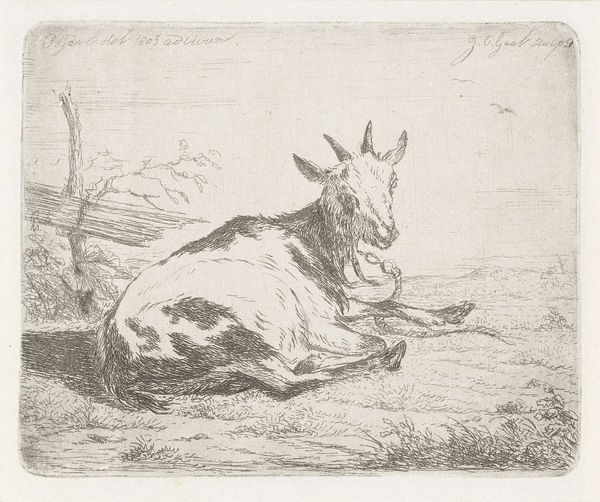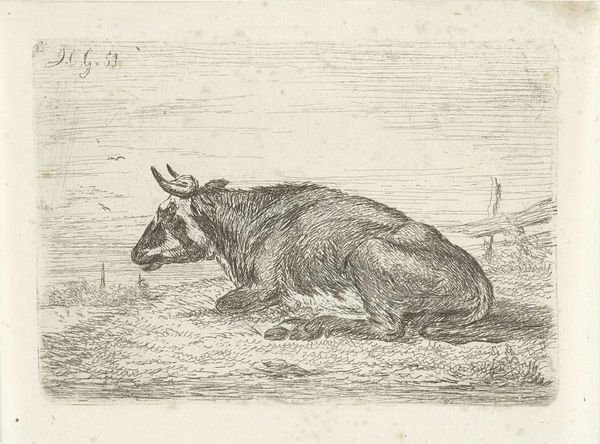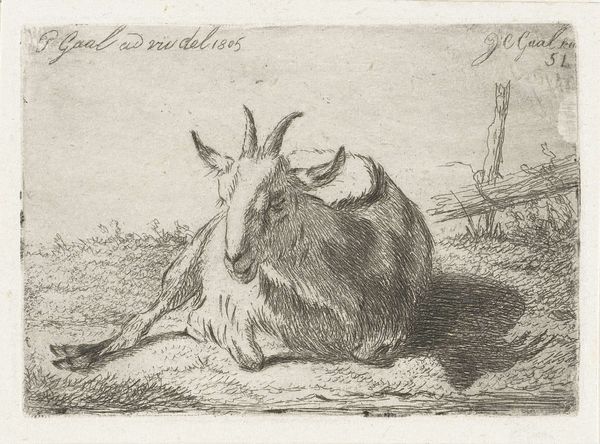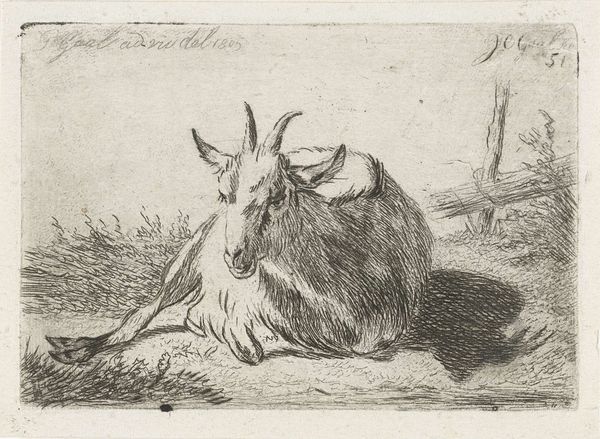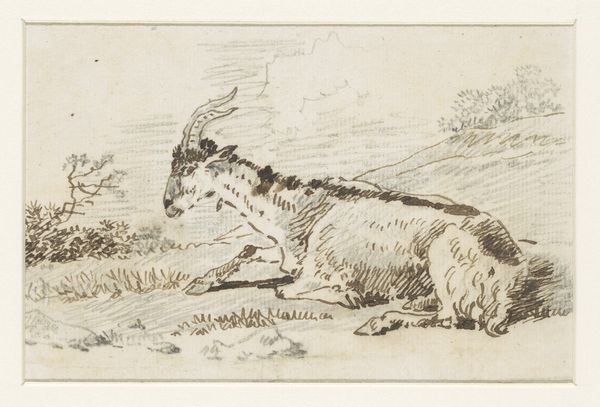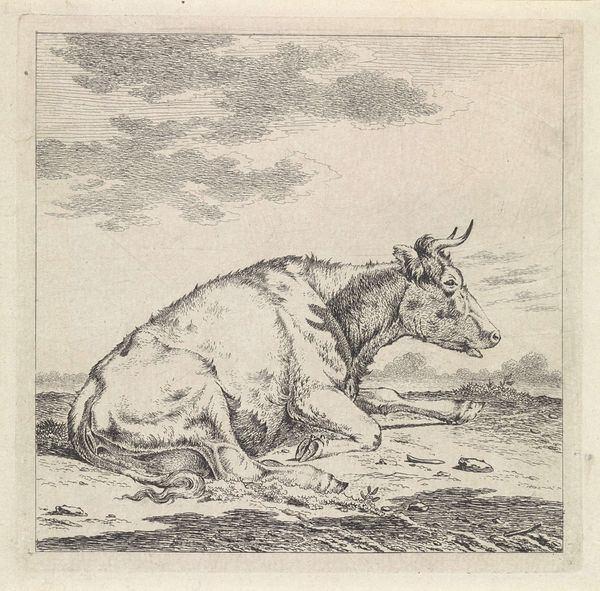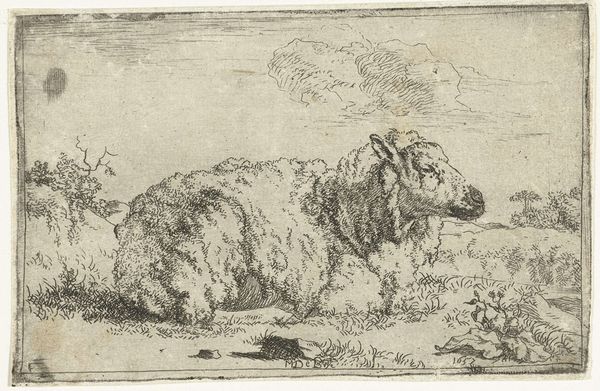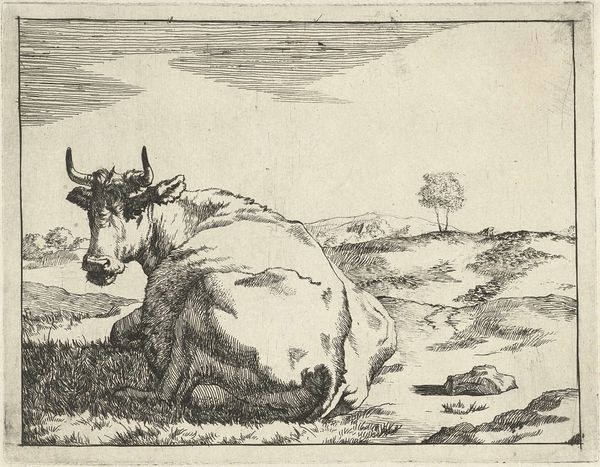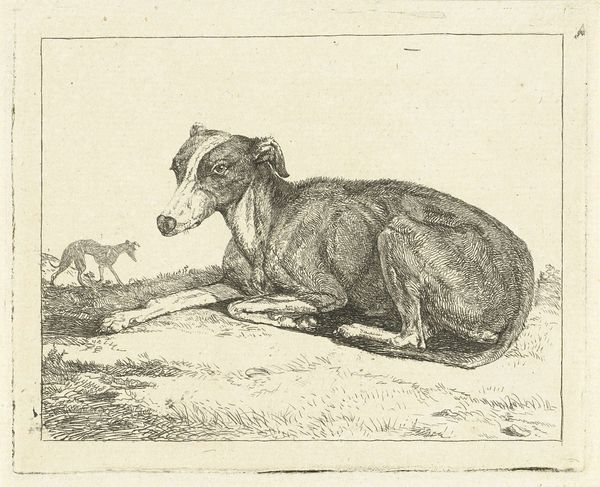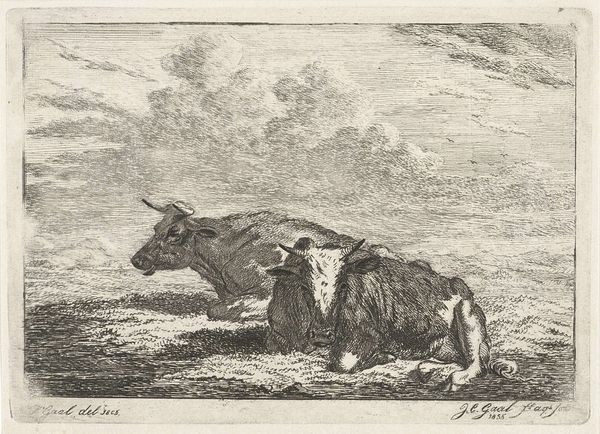
print, etching
#
animal
# print
#
etching
#
landscape
#
genre-painting
#
realism
Dimensions: height 85 mm, width 103 mm
Copyright: Rijks Museum: Open Domain
Jacobus Cornelis Gaal etched this resting goat in 1851. Observe the goat’s posture. Relaxed yet alert, a collar loosely hung around its neck. Since antiquity, goats have served as potent symbols. In some contexts, they represent fertility and vitality, echoing pagan rituals and the untamed forces of nature. But, contrast this bucolic image with darker associations. In medieval Christian art, the goat became linked to the demonic—a symbol of lust, stubbornness, and the scapegoat bearing the sins of others. This duality isn’t a contradiction; it’s a testament to the symbol's resilience. Recall Goya’s Witches' Sabbath, where a demonic goat presides over a nightmarish scene. Consider how this symbolism has shape-shifted across centuries, fueled by collective anxieties and subconscious drives. The emotional weight of Gaal’s goat lies not in a fixed meaning, but in its ability to trigger a deep-seated dialogue within us – a primal recognition of nature's beauty, as well as humanity's shadow. It's this cyclical progression of symbols that reveal our complex engagement with the past.
Comments
No comments
Be the first to comment and join the conversation on the ultimate creative platform.
